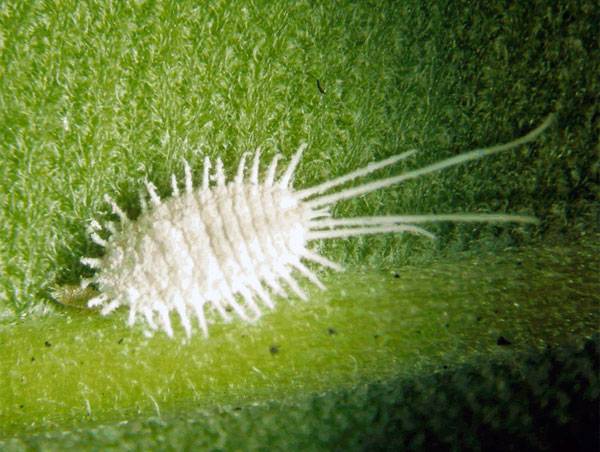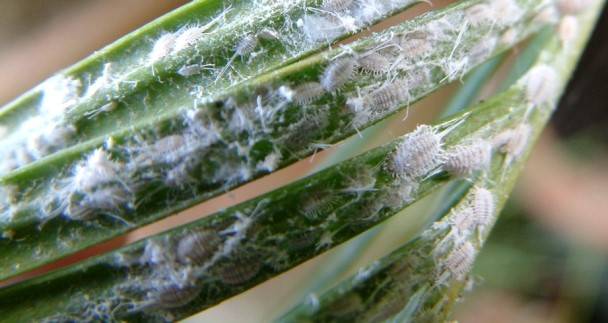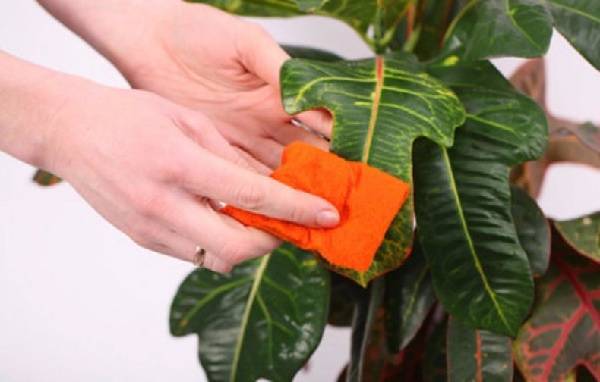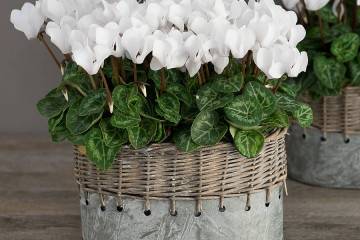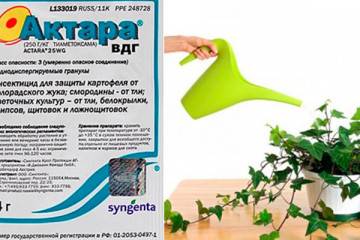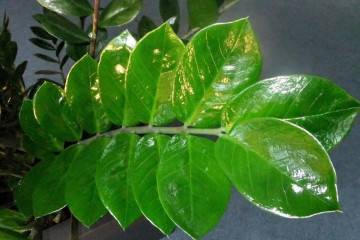Mealybug - how to deal with indoor plants
Content:
When a mealybug appears, the question arises of how to deal with it on indoor plants. This problem worries both beginners and those with some experience of flower growers. People often believe that the more active agricultural chemistry is, the more effective it will be. But as a result, it only causes allergies in households and harms plants. Meanwhile, sometimes the simplest and mildest remedies give excellent results!
Mealybug - how to deal with indoor plants
The mealybug is a small arthropod, in fact, a tick. In total, more than two thousand of its species are found in nature, of which about 300 live in Europe. And many of them can do a lot of damage to home flowers. There are some external differences between them, but they are still invisible to the naked eye.
Causes of the appearance of a pest on plants
It is impossible to say where exactly the worm came from in a given situation. As a rule, these pests appear where conditions are especially favorable for them. This is excessive moisture in the soil in pots, improper plant care - for example, if the owner does not regularly remove dead leaves and shoots. It also happens that a florist buys an infected soil or plant on which the first worms have already taken root, but so far this has not caught the eye.
Infection symptoms
It is important to know what a worm infestation will look like. Usually this is indicated by such a symptom as the appearance of sticky lumps of white color. They appear fluffy and look like cotton wool. Such lumps are visible on the leaves and stems of the flower.
If you take a closer look at the plaque, you can see that it does not always look like lumps, sometimes they are flat growths. If the flower is affected by mealybugs, then they gather at the cuttings of the leaves or on their veins. These places are most favorable for the life of the worm, since there it easily receives food - plant sap.
Having access to food is the main condition for active development. An adult worm remains in the area of his choice, from above it builds up a protective shell of white color, and then lays eggs under it.
Sometimes mealybugs do not live on plants, but in the ground. Then the infection looks like the appearance of thin white threads in the ground, on which "compaction" occurs in some areas. If you do not get rid of them, then gradually the strings will braid the roots of the plant.
Typical signs of plant damage by a worm
In order to learn how to get rid of mealybugs on different indoor plants, you first need to learn how to correctly diagnose. The fact is that in different plant species, signs of infection can manifest themselves in different ways. For example, in an orchid, the presence of a mealybug is noticeable by the deformation of the shoots and buds - these parts of the plant must be cut off and destroyed immediately.
On the "money tree" usually not flat growths are noticeable, but lumps on branches.But in violets and citrus fruits growing in indoor conditions, the leaves lose their color and fall off without any visible problems - in these plants the pest lives on the roots.
What plants are most often affected and how dangerous
The mealybug can infect both ficuses, indoor jasmines (they are correctly called stephanotis), and some varieties of ivy, and even cacti. Also, this pest loves orchids and shefflers. Violets and fuchsia are susceptible to infection.
The food base of the pest is plant sap, due to its lack, the tissues of the stems and leaves are damaged.
How to start the fight against mealybug
The fight against the pest begins with the inspection of the plant and the mechanical removal of the mealybug from the plant and soil. And only then the most effective method of flower treatment is chosen.
Popular means of struggle
Ready-made pest control products are of two types - these are agrochemicals, on the basis of which the solution is prepared. And also special sticks that are applied directly to the soil.
If we talk about folk remedies, then watering the plant with water infused with orange and lemon peels would be a good choice. Horsetail solution can be used as an additional spraying agent, for which raw materials are bought at a pharmacy. Garlic infusion helps well: 5-6 crushed cloves per liter container of water.
Folk remedies: soap-alcohol solution
In most cases, folk remedies are inferior in performance to factory ones. But they are much safer from an environmental point of view. They do not require compliance with such strict precautions, and they do not bring harm to health.
Processing a plant with a soap-alcohol solution is considered one of the simplest and most affordable options. A piece of baby soap without additives must be rubbed on a fine grater, take 1 teaspoon of this ingredient and dissolve in 40-50 g of boiling water. Add 1 tbsp to this mixture. spoon of alcohol, stir again. A fairly strong base is obtained, which is dissolved in a liter of water. The leaves of the plant are washed with this agent.
Mealybug chemicals
Before taking on the treatment of a plant affected by a mealybug, you need to find out which remedies are considered the most effective. Most experts agree that effective therapy should involve the use of not folk remedies as a basis, but a systemic drug or its solution. In liquid form, this medicine is better absorbed by the plant. It is absorbed through the roots, and then its active substance, as a result of metabolic processes, enters all parts of the plant.
Getting rid of the mealybug is given by drugs such as Confidor, Mospilan, Aktara. The dosage is determined by the manufacturer, for example, Aktara is taken in the amount of 1 sachet per ½ liter of water, then for the rest of the products from the list, the recommended dosage is half as much - 1 sachet per 1 liter of water.
Preventive actions
The fight against this arthropod pest can be carried out in different ways. But spraying cannot be called effective. This method is used as an adjunct or prophylactic agent.
For such purposes, you can purchase a ready-made spray, it will be easier than making it yourself. For example, a remedy such as Calypso has proven itself well, and it has several high-quality analogues.
Before using this spray, all existing growths and lumps from the leaves and stems of the plant must be removed. This is done gently, with light movements, using a cotton pad dipped in alcohol, even better in its solution.
After carrying out this procedure, the plant is allowed to dry for a day. And only then they spray with a spray, and try to sprinkle all the leaves with them as carefully as possible. It is very important not to miss anything, because only then will the treatment or prevention give the desired result. Re-spraying is carried out, if necessary, in accordance with all manufacturer's instructions.
In general, the timely removal of dead leaves, washing the plant, moderate watering are factors that prevent the appearance of not only this pest, but also other insects dangerous to the flower, as well as its fungal infection. Do not neglect these rules.
